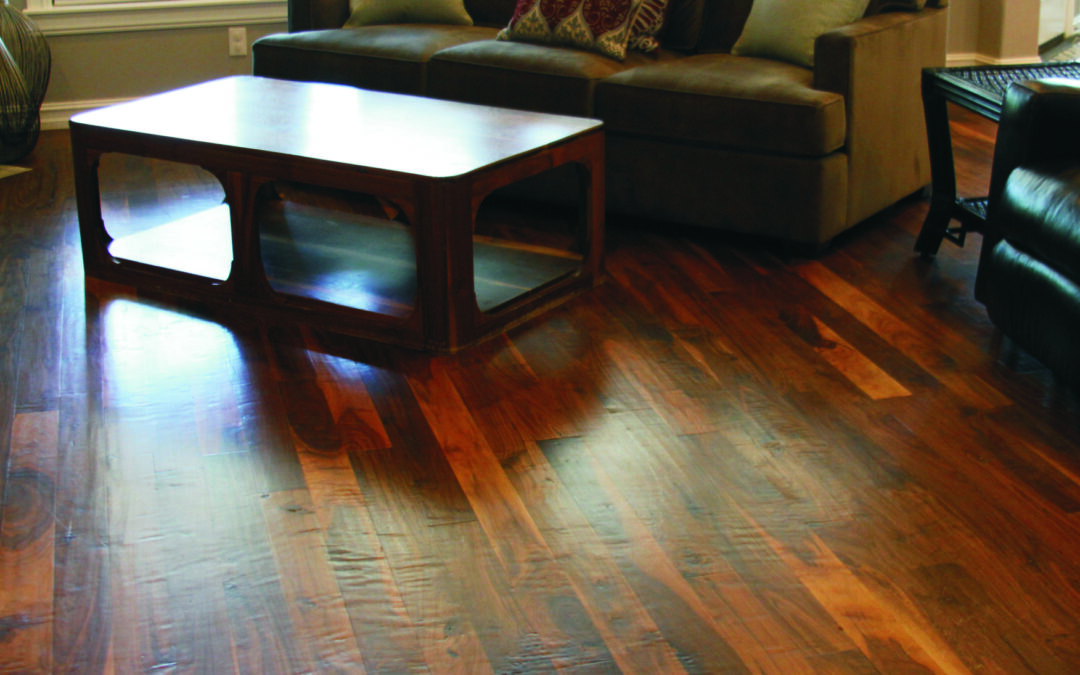So you’ve decided to install new wood floors in one or more rooms of your home. That’s a big decision, but it’s only the first step. You now face a whole array of choices as to what kind of wood floors to install. For example, do you prefer hardwoods or a softer type of wood? What color or shade would look best in your home? High polish, natural look, or distressed? Traditional, modern, or rustic?
See what we mean? The same type of wood floor might look perfect in one space, but in another, not so much. Our team can certainly help you narrow down the best options for your space, but for now, let’s look at four key considerations when choosing your wood floors.
1. Overall Look and Style
If you’re designing the interior from scratch, what kind of design style are you looking for? Are you leaning toward modern/trendy or traditional/timeless? If you’re installing the floors into an already-decorated space, what type of furnishings and wall coverings do you have? As a general rule of thumb, darker floors tend to create a rich, elegant or sophisticated vibe, while lighter floors exude a more casual or modern feel. Beyond that, you want to select a flooring style that matches or complements your existing décor, or at least won’t clash with it.
2. Expected Use or Wear-and-Tear
The next consideration is this: how much durability do you need from your wood floors? Are you installing the flooring in an area that’s going to see a lot of foot traffic? Will there be small children and/or pets? If your new floors need to stand up to a lot of abuse, a harder wood like oak, maple or hickory will be more resistant to scrapes and scratches. If it’s just you living in the home and you tend to have a light touch, you can probably get away with a softer wood like pine or walnut. Another tip: Distressed or hand scraped wood floors can mask scratches and scrapes quite well.
3. General Maintenance and Upkeep Habits
Certain types of wood floors require a bit more attention than others to keep them looking their best. High-polished dark floors, for example, will show dust and dirt more easily than lighter woods or textured finishes. If you don’t mind keeping up with the housework, you’ll probably enjoy a polished, elegant look for your wood floors. If you prefer more casual living habits, look for colors and finishes that are lower maintenance.
4. Lighting
A fourth consideration, one that often goes overlooked, is the available lighting of the room. Dark hardwoods placed in rooms with plenty of natural light can look quite elegant, especially if they’re offsetting light colored furnishings or décor. On the other hand, if dark floors are placed in dark spaces, they can make the room look downright bleak. In most cases, the “offset approach” can work quite well—choose dark woods for light spaces, and light woods for dark spaces. And if you want to create an extra sunny, almost beach house-type of look—try placing light woods in light spaces.
We know it’s a lot to think about, but if you take the time to look at these different factors and really evaluate which type of wood flooring might look best in your space, you’ll be happier with your choices overall. Of course, our team is more than happy to talk you through your options and let you view samples to help you make a qualified decision. Give Renaissance a call today at 918-298-4477.

